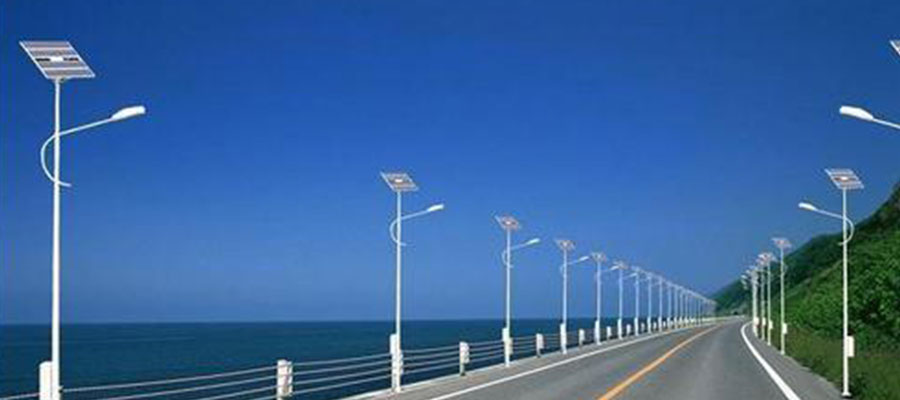3 Useful Tips To Choose Lamp Pole Of Solar Street Light
2022-01-23
VIEW "2038
As a green and environmentally friendly outdoor lighting fixture, solar street lights have been welcomed by more and more people in recent years. Making full use of solar energy resources to provide electricity has a positive significance for alleviating the energy shortage.Solar street light is powered by solar energy, and the operating cost is almost zero. The operation of the entire system is automatically controlled without human management. Not only is the operating cost low, but also does not pollute the environment. The installation of solar powered street lights is simple and convenient. There is no need to dig holes and lay cables like ordinary street lights. It only needs a base to fix it, and all the lines and control parts are placed in the light frame to form a whole. As outdoor lamps, solar street lamps often encounter bad weather such as wind, frost, rain and snow, so the street lighting lamp poles are also very important. Whether the lamp pole is in its height, quality or some details, it is exquisite. What are the requirements to pay attention to when choosing a solar street light pole? We can make a summary together.

I Pole material requirements for solar street lights
The material of the light pole will directly affect the service life of the street light, so it needs to be selected carefully. Common light pole materials include light poles made of Q235 steel, stainless steel light poles, cement poles, etc.
1. The light pole made of Q235 steel can be hot-dip galvanized on its surface to enhance the anti-corrosion performance of the light pole. Another treatment method is cold galvanizing, but it is recommended that you choose hot-dip galvanizing.
2. Solar powered street lamp poles are also made of stainless steel and anodized light poles. The anti-corrosion properties of these two materials are also excellent, but in terms of price, 3. they are less friendly than steel light poles. , you can choose according to your specific budget.
3. The cement pole is a more traditional light pole, with long service life and high strength, but it is heavy and inconvenient to transport.
II Requirements for wall thickness of solar street light lamp poles
The greater the thickness of the pipe wall, the stronger the wind resistance and pressure bearing capacity. Generally speaking, a better solar street light lamp pole has a larger wall thickness, which can ensure safety. Therefore, when you buy, you must confirm the wall thickness of the lamp pole with the solar street light manufacturer again and again. For example, a street light of about 2-4 meters requires a wall thickness of at least 2.5cm; a street light of about 4-9 meters requires a wall thickness of about 4-4.5cm; a street light of 8-15 meters high requires a wall thickness of at least 6cm. If it is an area with strong winds all the year round, the value of the wall thickness should be larger. Another thing to consider is the installation issue. Since there are so many street lamp poles, if the installation requires a lot of manpower and material resources, the installation cost will naturally increase. As a result, a street light pole that is easy to install has become a sought-after object. This is also one of the criteria for judging whether it is good or bad. Generally speaking, a solar street lamp that is easy to install is more popular.
III Pole height requirements for solar street lights
Generally speaking, professional solar street light manufacturers need to survey and measure different environments, and then select light poles of different heights according to the brightness of the LED light source. Solar street lights are installed in different places, and their heights are different. Too high or too low light poles will affect its use efficiency. Part of this standard is the rigid requirements of the industry, and part of it is accumulated by various solar street lamp manufacturers based on their years of production experience. Usually, different heights are designed according to the width of the road, so as to maximize the lighting effect. And the surrounding trees and buildings cannot block the solar panels.

